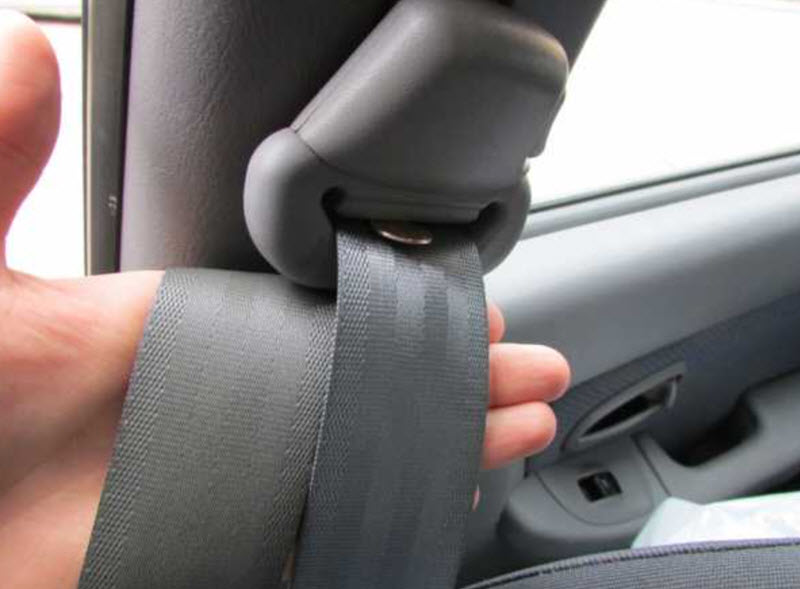
Why the seat belt does not extend and how to fix it
Content
It is sometimes believed that pillows provide the main safety in the car, however, this is not the case. Airbags help to avoid injuries, but only seat belts can save lives. But if no one in their right mind will turn off the pillows, then it is not always possible to force them to use the belts correctly.
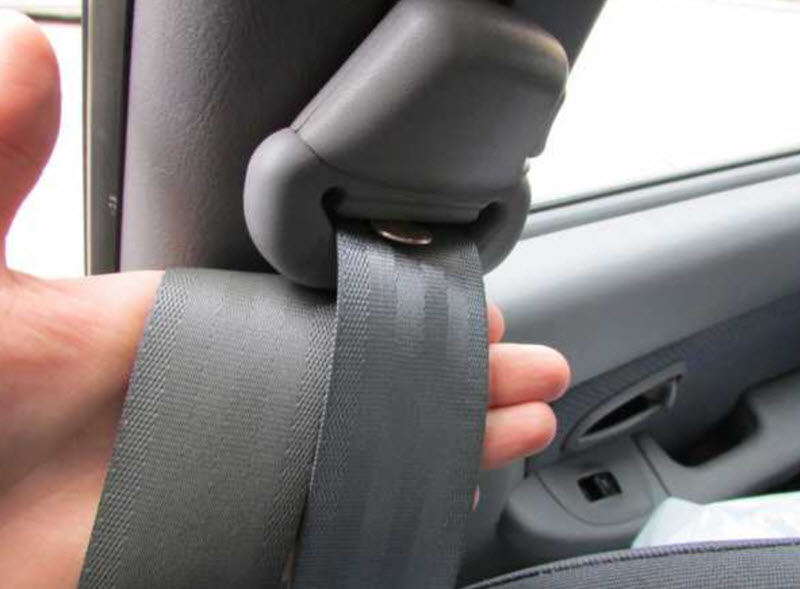
To automate the tension, winding (coil) and locking (inertial) mechanisms are introduced into the design. Additionally, emergency tensioning devices with squibs are installed.
What can cause a seat belt to jam
The devices that make up the coils are quite reliable, but any mechanisms fail over time. This is usually due to the wear of parts and the ingress of contaminants.

coil lock
During braking, as well as a sharp roll of the car body, when an accident or a car overturn is possible, the direction of the gravity vector changes relative to the body of the belt mechanism. This body itself is rigidly fixed to the body pillar; under normal conditions, its vertical axis coincides with the same axis of the body and the direction to the ground.
The blocking works on the principle of moving a massive ball, as a result of which the leash associated with it deviates and blocks the ratchet mechanism of the coil. After returning to the normal position, the coil should unlock.
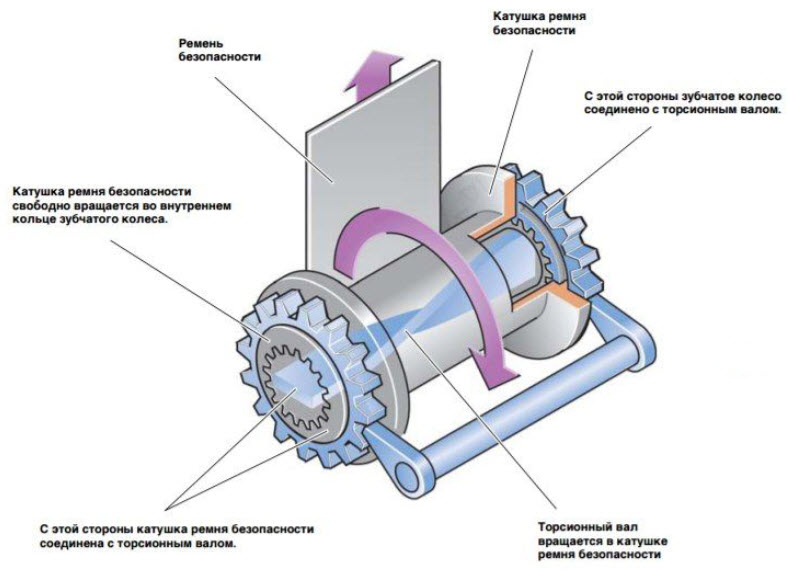
The second inertia mechanism is an eccentric lever and a gear with an internal tooth on the coil axis. If the unwinding speed exceeds a dangerous threshold, then the lever turns, moves and engages with the tooth. The axis is fixed relative to the body, and rotation is blocked. When the belt is pulled out smoothly from the case, this does not happen.
A coil spring is responsible for retracting the belt into the housing and winding it. It is fully compressed when the belt is pulled out and relaxes when it is wound up. The force of this spring is sufficient to press the belt against the passenger with some density.
Wear of mechanism parts
The belt is used with the same regularity as the car as a whole, it is natural that the mechanism is subject to wear. Even when moving, the coil continues to partially work out the movements of a person.
As a result of wear, the locking mechanisms suffer the most, as they are the most complex part of the design.
The ball is constantly moving due to changes in terrain, acceleration, braking and cornering. Other related elements also work continuously. The lubricant has the ability to oxidize, dry out and degrade, itself becoming the cause of seizing.
Igniters
Modern belts are equipped with a pretensioning system in case of an accident. At the command of the electronic unit, which recorded anomalous accelerations according to the signals of its sensors, the squib in the tension mechanism is activated.
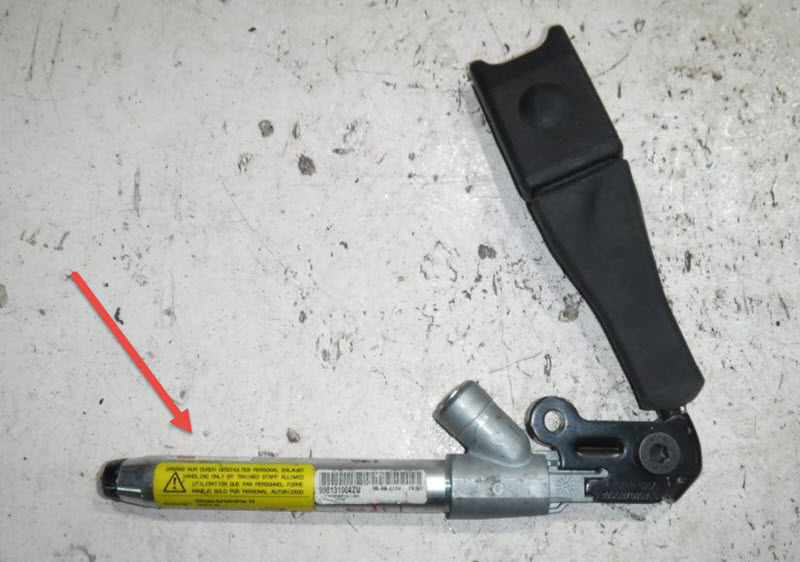
Depending on the design, either the escaping gases under high pressure begin to rotate the rotor of the gas engine, or a set of metal balls moves, causing the coil axis to twist. The belt takes up as much slack as possible and firmly presses the passenger to the seat.
After triggering, the mechanism will inevitably be jammed and the belt will not be able to unwind or rewind. According to the safety regulations, its further use is unacceptable, the textile is cut and replaced as an assembly with the body and all mechanisms. Even if it is repaired, it will no longer be able to provide the required level of security.
coil problem
The coil stops working normally for several reasons:
- loosening of the textile material itself after long use;
- ingress of dirt into the rotation nodes;
- corrosion and wear of parts;
- weakening of the coil spring after being in a twisted state for a long time when using all kinds of clothespins-clamps, which is strongly not recommended.
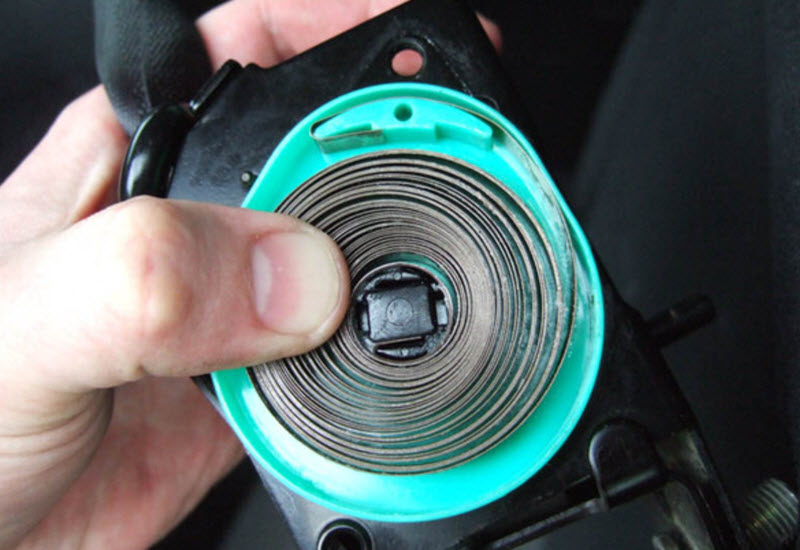
The spring can be tightened by increasing its preload. This task is difficult and requires utmost care, because after removing the plastic cover, the spring immediately unwinds and it is extremely difficult to return it to its place, all the more so to adjust it correctly.
How to find the cause of the malfunction
After removing the reel body from the rack, it must be positioned strictly vertically and try to smoothly pull the belt out of the body. If there is no inclination, then the belt should come out easily and retract when released.
If you tilt the case, the ball will move and the coil will be blocked. A working mechanism restores its work after returning to a vertical position. Wedging indicates a malfunction of the ball lock.
If the belt is pulled out fast enough, the centrifugal lock with eccentric lever will work, and the coil will also be blocked. After releasing, work is restored and there should be no interference with smooth pulling.
Work on diagnosing a pyrotechnic tensioner is available only to specialists due to the danger of the mechanism. No need to try to ring it with a multimeter or disassemble it.
Seat belt repair
Available repair methods consist of partial disassembly of mechanisms, cleaning, washing, drying and lubricating.
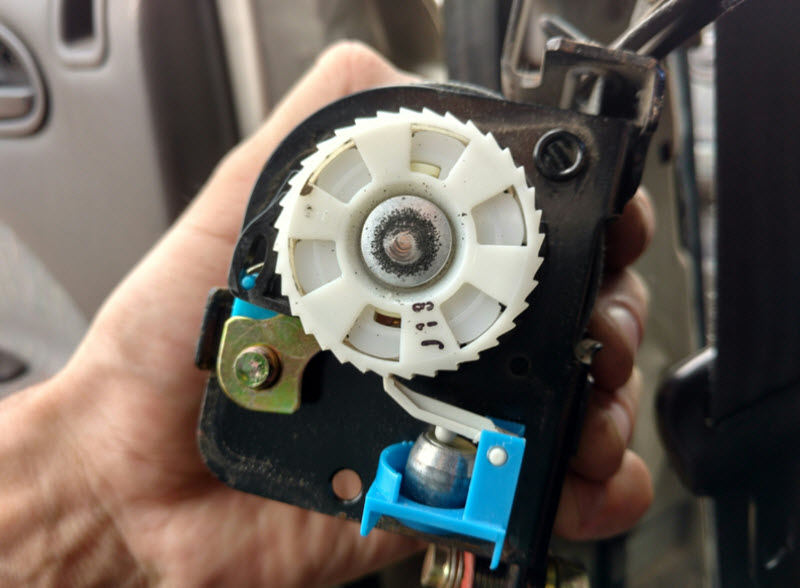
Tools
Not in all cases, repairs will be possible using standard tools. Sometimes the internal fasteners contain non-standard screw heads, it is difficult to buy the appropriate keys.
But in most cases you will need:
- a set of keys for removing cases from the body;
- slotted and Phillips screwdrivers, possibly with interchangeable Torx bits;
- clip for fixing the stretched belt;
- a canister with an aerosol cleaner;
- multipurpose grease, preferably silicone based.
The procedure is highly dependent on the specific car model and belt manufacturer, but there are general points.
Instructions
- Belts are removed from the body. To do this, you will need to unscrew a few bolts from the body nuts with socket or box wrenches.
- With a thin screwdriver, the latches are pressed, the screws are unscrewed and the plastic covers are removed. Unless necessary, do not touch the cover, under which there is a spiral spring.
- The ball body is removed, the parts are cleaned and inspected, if spare parts are available, worn or broken ones are replaced.
- The mechanism is washed with a cleaner, dirt and old grease are removed. A small amount of fresh grease is applied to the friction zones. You can’t do much, too much will interfere with the free movement of parts.
- If it is necessary to disassemble the inertial mechanism and spring, remove the cover after removing the fasteners with extreme caution. The levers of the mechanism must move freely, jamming is not allowed. To increase the preload of the spring, its inner tip is removed, the spiral is twisted and fixed in a new position.
- Parts should be washed with a cleaner and lightly lubricated.
The best solution is not to try to repair the belt, especially if it has already served for a long time, but to replace it as an assembly with a new one.
Over time, the reliability of work decreases, the probability of a successful repair is also low. Finding new parts is almost impossible, and used parts are no better than those already available. Saving on safety is always inappropriate, especially when it comes to belts.
Their material itself quickly ages and in case of danger, all this will work abnormally, which will lead to injuries. No pillows will help with failed belts; on the contrary, they can become an additional danger.
